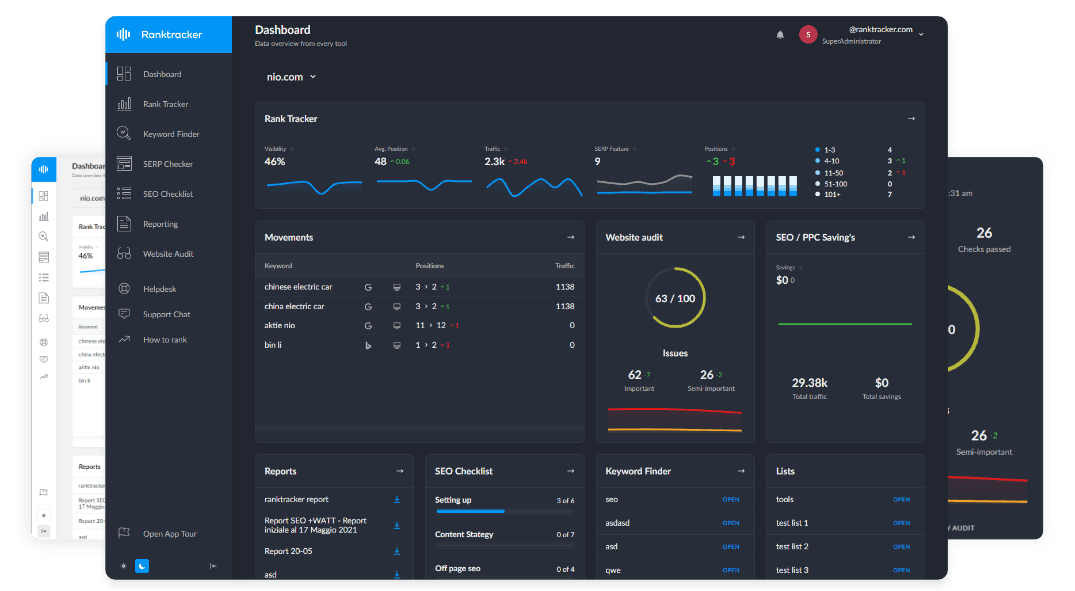Intro
If your traffic isn’t converting—or can’t scale without breaking—there’s a good chance the problem lives in the seam between design, development, and SEO. For brands that don’t have all three disciplines humming, partnering with a specialist such as a Solar Digital marketing agency can compress the distance from strategy to working, revenue-generating pages. The right partner turns fragmented “best practices” into a repeatable system you can scale.
Why SEO Wins Start With Design (Not Just Keywords)
Google increasingly rewards satisfaction signals: fast load times, intuitive IA, clean code, and pages that answer intent without friction. This is why design decisions (architecture, components, performance budgets) are SEO decisions.
-
Architecture shapes crawl paths and redistributes PageRank to the URLs that matter.
-
Templates determine how consistently you can ship optimized pages.
-
Performance impacts rankings and revenue; every ~100–200 ms shaved from LCP can push both conversions and positions.
-
Accessibility and trust markers reduce pogo-sticking, improving engagement metrics that correlate with visibility.
If you need that end-to-end alignment from brand to build, a Solar web design agency can be a force multiplier—especially during replatforms and redesigns.
Design Decisions That Move Rankings
Information Architecture Built on Intent
Group queries by job-to-be-done, not just by keyword similarity. Create:
-
Hubs for core intents (e.g., “pricing,” “solutions,” “industry use cases”), each owning a canonical query.
-
Spokes for sub-intents and long-tails that internally link up to the hub and laterally across related spokes.
-
Guardrails against cannibalization via canonical ownership and unique H1/H2 patterns.
A Component Library You Can Actually Rank With
Standardize modules so editors assemble SEO-ready pages without new dev work:
-
Hero with value prop + single primary CTA
-
Proof band (logos, review count, rating)
-
Feature grid with scannable H3s
-
Comparison block (you vs. alternatives) with clear, accessible markup
-
FAQ (schema-ready)
-
Testimonial card with author schema
-
Related resources and “next step” CTAs
Performance Budgets, Enforced
-
Cap JS under a strict kb target; no unnecessary client-side rendering for static copy.
-
Inline critical CSS; lazy-load below-the-fold media; prefer modern image formats with width/height set.
-
Limit third-party tags; load asynchronously; use server-side tagging where possible.
Accessibility as a Ranking Multiplier
-
Landmark regions (header, main, nav, footer)
-
Semantic headings that mirror content hierarchy
-
Focus states, keyboard navigability, descriptive alt text
-
Color contrast meeting or exceeding WCAG AA
Internal Linking Rules That Don’t Dilute Relevance
-
3–5 contextual links per ~500 words
-
Descriptive anchors that mirror intent (“enterprise SEO reporting”), not “click here”
-
Automated hub↔spoke linking with no orphan pages
A 90-Day SEO-Ready Redesign Roadmap
Days 1–14: Baseline, Risks, and Opportunities
-
Export top URLs, queries, CTR, conversions; tag pages as keep, merge, retire.
-
Crawl to surface thin content, duplicate titles, parameter traps, soft-404s.
-
Map Core Web Vitals (by template) and diagnose render-blocking resources.
-
Recruit a pilot cohort of pages to soft-launch changes.
Days 15–30: Intent-Driven IA and Canonical Ownership
-
Build the hub/spoke map with primary and secondary intents.
-
Define URL schema (consistent, human-readable slugs).
-
Assign canonical ownership to eliminate cannibalization.
-
Specify breadcrumb logic and internal link pathways.
Days 31–45: Template Specification and Governance
-
For each template (homepage, solution, industry, blog, comparison, feature), define:
-
Required modules, slot order, and min/max counts
-
Heading patterns (1 H1, scannable H2s, optional H3s)
-
Media rules (ratios, alt text, captions)
-
Schema types (Product, FAQ, Article, Organization, Breadcrumb)
-
Internal link slots (topical, commercial, support)
-
Write an editorial checklist that enforces this spec inside your CMS.
Days 46–60: Performance Engineering and CI
-
Set budgets (e.g., LCP < 2.2s on 4G, CLS < 0.1, TBT < 200ms).
-
Build CI checks: block merges that exceed bundle size or fail Lighthouse thresholds.
-
Implement image CDNs, preconnect key domains, cache policies, and HTTP/2 push/103 Early Hints where available.
Days 61–75: Migration Design With Parity
-
301 map from all legacy URLs to the new structure; never wholesale change slugs without reason.
-
Preserve meta titles/descriptions, canonical tags, schema, and heading semantics.
-
Maintain or replace internal links like-for-like; avoid resetting content age signals.
-
Stage a thorough QA: structured data validation, hreflang (if used), robots and sitemap accuracy.
Days 76–90: Controlled Rollout and Iteration
-
Soft launch to 5–10% of pages; monitor impressions, rankings, CWV, and conversions.
-
Fix regressions before the broader cutover.
-
Post-launch, add weekly net-new spokes using your component library.
Plug Ranktracker’s Web Audit into your staging and production to catch regressions, and set the Rank Tracker to monitor hub and spoke growth by intent cluster.
Measurement: Know If It’s Working
Track at three levels and tie to a living dashboard:
-
Template Level
-
LCP, TTFB, CLS, TBT
-
Crawl depth, index coverage, schema errors
-
Rendered vs. raw HTML content parity
-
-
Cluster (Hub/Spoke) Level
-
Primary keyword positions, impressions, CTR
-
Assist/contribution to conversions
-
Internal link equity (inbound links per spoke, hub centrality)
-
-
Business Level
-
SQL volume and quality, pipeline influenced
-
CAC payback deltas
-
Time-to-publish for new pages (from brief to live)
-
What a High-Caliber Partner Delivers (And How to Vet One)
Strategy and Story, Not Just Screens
-
Demand a narrative about your demand landscape: who searches, why, with what anxieties—and how design removes friction.
-
Ask for case studies with baselines and deltas (traffic, revenue, Core Web Vitals), not just pretty before/after shots.
Systems You Own After Launch
-
Figma libraries mapped 1:1 to production components
-
CMS block types with validation (e.g., H2 required, max 7 words in card titles)
-
Content SOPs + governance to avoid “template drift”
Dev and Data Done Right
-
Semantic HTML first; lean JS; hydration only where interactive
-
Schema coverage by template; analytics events pre-wired (scroll depth, CTA exposure, form completion)
-
Post-launch playbooks for iteration, not one-and-done
If you want that done without a hiring spree, a specialist like Solar Digital can align brand, UX, and technical SEO so you ship faster and grow cleaner.
Practical Playbooks You Can Lift Today
Internal Linking Playbook (10 Minutes per Page)
-
Add 1 link from each new spoke to its hub in the first 200–300 words.
-
Add 2–3 lateral links to sibling spokes using descriptive anchors.
-
From the hub, feature top spokes above the fold and again in “related reading.”
-
Audit monthly for orphaned spokes; fix immediately.
On-Page Template Guardrails
-
One H1 that states the job-to-be-done (“Enterprise SEO Reporting for Multi-Site Brands”).
-
First screen includes value prop, social proof, and a single primary CTA.
-
Every 300–400 words: a proof/CTA/next-step element to keep attention.
-
FAQs answer objections; ensure they are indexable and marked with FAQ schema.
-
End each page with a clear hand-off: demo request, pricing, or related hub.
Core Web Vitals “Fast Fixes”
-
Replace heavy hero video with a poster image + deferred playback.
-
Inline critical CSS for above-the-fold; defer non-critical CSS.
-
Self-host fonts or use system fonts; preconnect to font hosts if needed.
-
Serve responsive images with explicit dimensions to avoid layout shifts.
Common Pitfalls to Avoid
-
Pretty but heavy: Animation-laden themes that crush LCP/TBT.
-
Content without architecture: Publishing posts that don’t connect to commercial pages.
-
JS-gated content: Relying on client-side rendering for primary copy or links.
-
Messy migrations: Missing 301s, changed slugs, lost internal links, reset metadata.
-
One-and-done launches: No post-deploy monitoring or iteration cadence.
Example: Turning a “Features” Page Into a Ranking Machine
-
Rewrite the H1 to reflect intent (“Rank Tracker for Enterprise SEO Teams”), not “Features.”
-
Split monolithic copy into scannable H2 sections that mirror search modifiers (pricing, integrations, accuracy, locations).
-
Insert a short FAQ addressing objections (“How accurate are your SERP checks?”, “Do you support localized tracking?”) with schema.
-
Add 3–5 contextual links to your connected hubs (pricing, integrations, case studies).
-
Reduce third-party widgets; replace with static screenshots and async embeds only where essential.
SEO + Design Governance (So You Don’t Regress in 6 Months)
-
Create a “Definition of Done” checklist for every page:
-
H1/H2 pattern followed
-
1 hub link in first 300 words
-
At least 2 lateral spoke links
-
Images compressed and dimensioned
-
FAQ present where intent warrants
-
Schema valid; no critical Lighthouse regressions
-
-
Review monthly: pick one template, run a focused audit, and push fixes in a batch.
When to Bring in Specialists
-
You’re replatforming or redesigning and can’t risk a traffic cliff.
-
You need a repeatable system to publish dozens of landing pages monthly.
-
Core Web Vitals or accessibility debt is blocking growth.
-
You want strategy, design, build, and measurement under one roof with accountable outcomes.
That’s the moment a partner like a Solar Digital marketing agency earns its keep—aligning brand, UX, and technical SEO so your roadmap ships on time and ranks on merit.
Conclusion
Sustainable SEO isn’t a keyword contest—it’s a systems problem. When information architecture, design, and engineering align, Google can crawl more efficiently, users convert more confidently, and you can scale content without chaos. Whether you build that system in-house or partner with a specialist like a Solar web design agency, the playbook is the same: intent-driven IA, fast accessible templates, rigorous migrations, and relentless iteration—measured against outcomes that actually move your business. Set the governance, enforce the budgets, and watch your organic revenue curve bend in the right direction.

